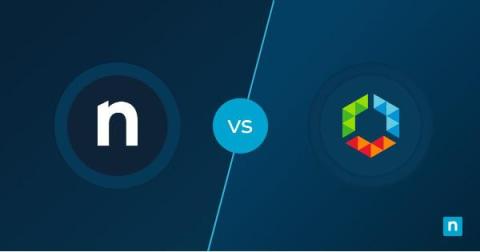Operations | Monitoring | ITSM | DevOps | Cloud
NinjaOne
8 Common Network Issues & How to Address Them
Choosing the Best IT Management Solution: NinjaOne vs. Workspace ONE
Establishing effective IT management frameworks hinges on selecting the right solution, vital for optimizing efficiency and safeguarding security. In a recent survey, 72% of small to medium-sized businesses (SMBs) prioritized enhancing security in response to growing cyber threats, with 47% recognizing the importance of automation for operational efficiency in 2024. In this context, two prominent contenders are NinjaOne and VMware’s Workspace ONE.
NinjaOne Named "Best Emerging Vendor" in 2023 Britain's Reseller Choice Awards
We are thrilled to announce that NinjaOne has been named the “Best Emerging Vendor” at the prestigious 2023 Britain’s Reseller Choice Awards. This achievement highlights NinjaOne’s significant impact in the IT sector and its rapidly growing influence within the British market.
How to Set Up a VPN: Complete Guide with Steps
As a growing number of people take note of their online privacy, the Virtual Private Network (VPN) has come to the fore as a simple, accessible way to secure one’s digital footprint. If you’re ready to use a VPN, you may be wondering how to get started. Whether you’re concerned about data breaches, online surveillance, or simply wish to access geo-restricted content, our comprehensive guide is here to demystify the process.
SAML vs. SSO: What's the Difference?
The landscape of modern authentication and authorization in IT systems has evolved significantly over the years. Initially, systems relied on basic password-based mechanisms, which gradually gave way to more sophisticated methods as security demands escalated. The advent of digital certificates and biometric verification marked a significant leap, offering enhanced security.
What Is NIS2?
To better protect its residents, organizations, and institutions, the European Union (EU) has strengthened its stance on cybersecurity with the introduction of NIS2 —the newly upgraded Network and Information Security Directive. This legislative framework is a response to the evolving cyber threats that show no sign of abating. In this article, we demystify NIS2 and share how it’s being used to establish a strong, unified cybersecurity framework across the EU.
Three Reasons Why You Should Learn PowerShell (With PowerShell Training Resources)
PowerShell is an extremely important tool in an IT professional’s arsenal, right next to the rattling box of screwdrivers and pile of vendor swag you got from IT conferences. If you aren’t familiar with PowerShell, let us introduce you! According to Microsoft, PowerShell is a cross-platform task automation solution made up of a command-line shell, a scripting language, and a configuration management framework.
NinjaOne Honored in 2024 BPTW Awards
We are thrilled to announce that NinjaOne has been recognized in the prestigious 2024 Best Places to Work (BPTW) awards program! This accolade is a testament to our commitment to creating an outstanding workplace culture and an environment where innovation thrives.
How to Start Safe Mode with Windows Command Prompt
Your computer has just decided to throw a digital tantrum, and all the regular troubleshooting tricks just aren’t cutting it. You know that there’s something awry under the hood of your Windows operating system, but navigating the litany of errors is making your head spin. Fortunately, there’s another option: entering Safe Mode via Windows Command Prompt.











